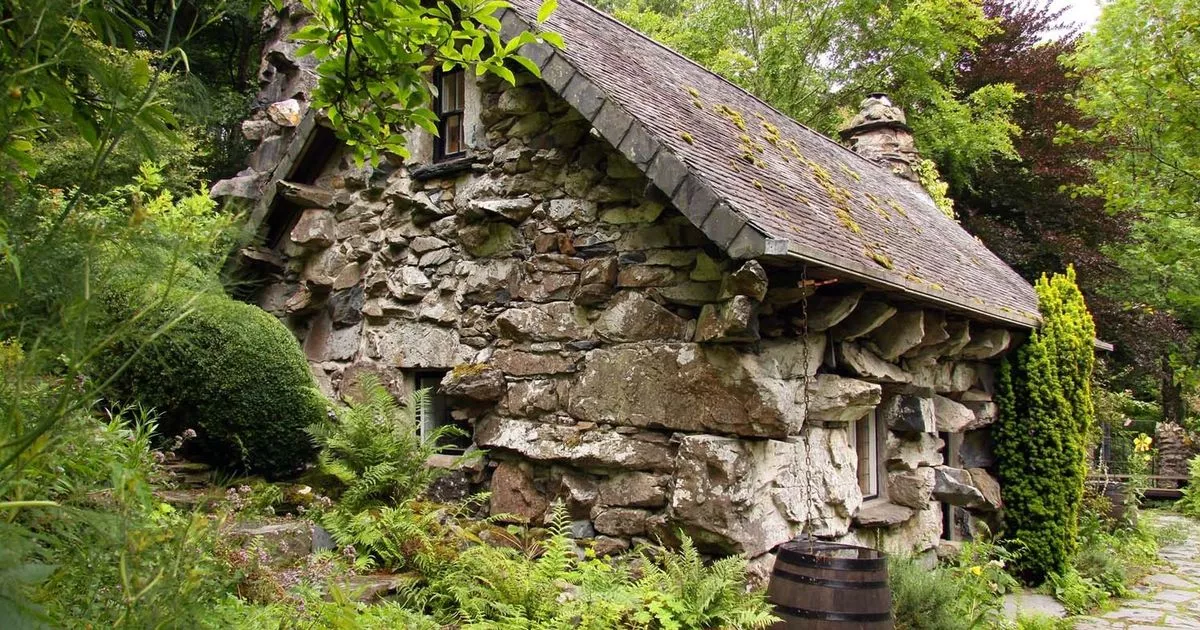By Andrew Forgrave
Copyright dailypost

Few places in Wales are rooted in myth as much as Tŷ Hyll, known in English as the “Ugly House”. Tourism bodies are happy to play along, saying it’s a building “full of history, legend and mystery”.
Tŷ Hyll is a tourism staple, and understandably so. Its rough construction from boulders weighing up to three tonnes appears either cumbersome or whimsical, depending on your perspective. Either way, it’s certainly eye-catching, with a whiff of Hansel and Gretel.
Claims that “nobody knows who built it or when” only fuel the intrigue. The building appears so ponderous and prehistoric that at one time its inhabitants were affectionately referred to as the “cave dwellers”.
Managing to look both ultra sturdy and slightly ramshackle, the house on Thomas Telford’s A5 road in Eryri (Snowdonia) has fascinated generations of visitors. Many have become accustomed to tales of its fairytale origins – apparently built by two brothers as a forest hideaway, having carved the date 1475 over its fireplace.
According to Welsh heritage body Cadw, such tales are stuffed with “amusing improbability”. But they have persisted, such as claims that Tŷ Hyll was a “Tŷ unnos”– a house that, if built overnight on common land, was yours to keep.
Or perhaps it was a variation of this Welsh tradition – that the land was claimed after squatters built a chimney and had smoke rising from it by daybreak. By throwing an axe from all four corners of the house, they then marked out the extent of the property.
Tŷ Hyll, next to Afon Llugwy between Betws-y-Coed and Capel Curig, is now owned by Cwmdeithas Eryri (Snowdonia Society), which also indulges the fantasy to a point. Join the North Wales Live WhatsApp community group where you can get the latest stories delivered straight to your phone
In its history of the place, the society says: “Legends say it was built by robbers and thieves, taking advantage of travellers as they journeyed through Snowdonia – ‘ugly’ people that gave the house a fearsome reputation.
“Tŷ Hyll may have been a robbers’ hideout in the 15th century, and Irish labourers constructing Telford’s bridge over the Llugwy in 1820 could have used it for shelter.”
One person who will have passed it several times, as he travelled along the London to Holyhead turnpike, was the great naturalist Charles Darwin, en route to his geological studies in Eryri between 1825 and 1842. While summering at the Plas y Brenin coaching inn in Capel Curig that he was already mid-way through his historic treatise on natural selection, The Origin of Species.
In a later book, he writes of his admiration for someone who can build a “noble and commodious edifice, without the use of cut stone”. He marvels at a man who can use “wedge-formed stones for his arches, elongated stones for his lintels, and flat stones for his roof”. He didn’t allude to Tŷ Hyll, but he may as well have done.
All that’s known with any certainty about Tŷ Hyll’s origins is that it predates Darwin’s stay in 1842. The first edition OS map to include Capel Curig was published in 1841 and Tŷ Hyll is marked on it. (Curiously, however, the house was not recorded in the Great Census of 1841).
Research suggests a local stonemason was paid £20 to build it. At the time the land was owned by the Gwydir estate and its style is similar to other estate cottages built a little later. An example is Bryn y Bont in the centre of Betws-y-Coed, though here the stone is dressed and walls much smoother.
Cwmdeithas Eryri acknowledges the Ugly House is more modern that commonly supposed. “Tŷ Hyll goes unmentioned by travel writers until 1853,” it says. “So it might be a Victorian folly – a romantic attraction for the increasing numbers of visitors to Snowdonia.”
Coflein, the historic records body, records the building as “post Medieval… 18th Century or early 19th Century”. This is more or less Cadw’s conclusion too. In its listing citation (Grade 11), the heritage body scoffs at the myths surrounding Tŷ Hyll.
“It seems most likely that the emergence of its `history’ occurred not long after its construction and was part of an invented package,” said Cadw. “As such it represents an interesting example of Romantic myth-making designed to satisfy the burgeoning tourist trade in North Wales during the 19th century.”
The obvious parallel is the sad story of Gelert, the faithful but misunderstood hound dreamt up by a creative Beddgelert hotelier to boost trade. As such, Tŷ Hyll was listed by Cadw for the “historical interest of its early association with tourism in North Wales”. The building is also cited for being architecturally interesting as an “early 19th century Picturesque cottage”.
Cadw suspects the Ugly House was built at the same time as Telford’s Tŷ Hyll bridge over the Llugwy between 1819 and 1821. Perhaps it sheltered the workers, or perhaps it was erected as a curiosity to capitalise on the opportunities brought by the new road.
Anecdotally, the Ugly House name, and its Welsh back-translation, may have come much later. Even by the early 20th Century, local people recalled it as “Ty Cyll” (Hazel House), the name subsequently changed for tourism purposes.
If Darwin was much taken by the skill of building homes without mortar, so too was Cwmdeithas Eryri, which acquired the semi-derelict building in 1988 and set about restoring it. More than anything, its volunteers were impressed by the sheer manpower needed.
But they noted that North Wales was certainly a good place to build it. The society said: “By the mid-19th century the skills to manoeuvre such large boulders would have been readily available among Welsh quarrymen – expertly tilting them out to stop rain entering the house and, with no mortar, plugging gaps in the thick walls with moss to block out the draught.”
Originally, the building had a ladder up to a sleeping loft under the roof. The first person recorded as living there, in 1900, was local shepherd John Roberts and his wife. It was then upgraded by the Rileys, who opened a popular tearoom after the First World War: this was renowned for the insults delivered by its bad-tempered cockatoo.
Later owners ran it as an antiques shop and tourist attraction. It’s now a highly-rated cafe with a “secret recipe” Welsh Rarebit and range of freshly baked cakes.
If the building’s origins are mired in mystery and concoction, there is one thing nearly everyone agrees about: its name is a misnomer. Sign up for the North Wales Live newsletter sent twice daily to your inbox
Many would love to live there. Online, one woman said: “Nothing about that house is ugly.” Another agreed, quipping: “Beauty is in the eye of the boulder….”
See what’s on in your area



